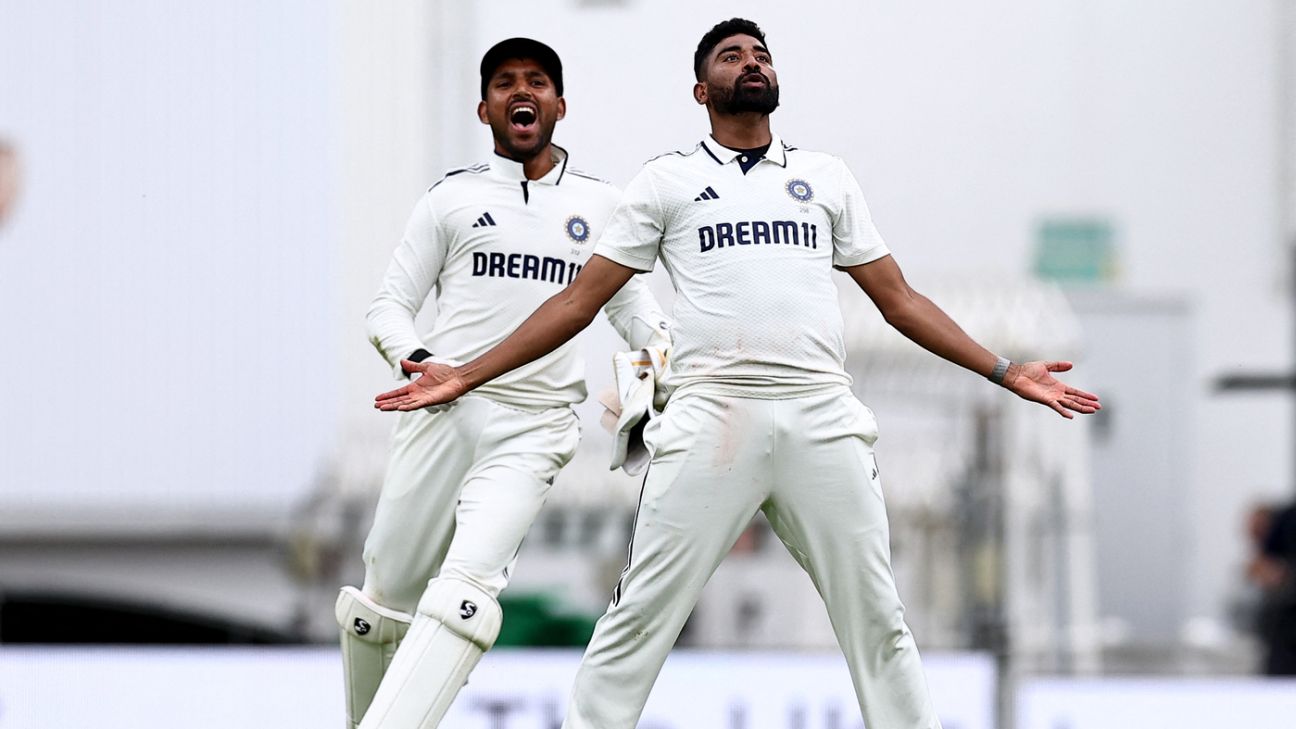Test cricket has a way of echoing through the decades. For those of us who played in or witnessed defining moments in cricket history, certain performances trigger memories of past turning points – moments when a team doesn’t just win a match but announces a new identity. India’s extraordinary comeback victory in the final Test of the 2025 series against England at The Oval was just such a moment.
To level the series 2-2 after being 2-1 down, against the odds, at one of England’s most iconic venues (and one of India’s happy hunting grounds!) was not merely a case of square scores. It was a declaration of purpose. It brought to mind, quite vividly for me, Australia’s 1972 Ashes draw under Ian Chappell. The last match in that series, also played at The Oval, also to level a series, sparked a generational shift in Australian cricket that would shape the coming decade.
The parallels are too strong to ignore.
In 1972, Australia arrived in England in a transitional phase. Bill Lawry had departed. Graham McKenzie, Ian Redpath – names synonymous with the preceding era – were gone. A young side, led by my brother, stood on the brink of the unknown. When we won the final Test to draw the series, with Dennis Lillee announcing his ascension to the Australian fast-bowling throne, we didn’t just save face. We established a tone – one of aggression, unity, and belief – that underpinned the golden era of the 1970s.
India in 2025 finds themselves at a similar inflection point. Rohit Sharma, Virat Kohli, R Ashwin are all absent. Their replacements didn’t just fill gaps; they filled their boots and went on to create new ones. Shubman Gill, entrusted with the captaincy, brought a calm authority and youthful assertiveness.
At times he allowed the game to drift and appeared to change the bowling by the clock, but he will grow quickly in the role if supported appropriately on and off the field. His use of the meagre bowling resources allotted was quixotic at times, but he now has the status to be more assertive at the selection table.
To me, Kuldeep Yadav not being picked was incomprehensible, as he is a potential match-winner. Fixing errors like that, and embarking on a continuing search for bowling depth, can make this a formidable team.
Gill’s own form was nothing short of spectacular. Yashasvi Jaiswal played with flair and maturity. Rishabh Pant added spark and steel, KL Rahul and Ravindra Jadeja brought experience and consistency. I will be surprised if Washington Sundar doesn’t establish himself as the team’s premier allrounder, who I expect to play in excess of 50 Tests.
And then, there was Mohammed Siraj.
The win at The Oval, like Australia’s in 1972, was more than a statistical result. It was a statement. India’s young team – much like Australia’s back then – has shown that it is not waiting to inherit greatness. It is intent on creating its own legacy.
But no one embodied that transformation more than the proud warrior Siraj.
To bowl more than 185 overs in five Test matches over six weeks in any conditions is a physical, mental and emotional marathon. To do so with consistent intensity, while carrying the attack in the absence of Jasprit Bumrah for stretches, is bordering on heroic. Siraj’s final-innings spell at The Oval – culminating in nine wickets for the match – sealed the game. But it was what led to that moment that truly stood out.
Siraj began the series tentatively. He lacked rhythm and confidence and bowled mixed lines and lengths. Questions were rightly asked about his readiness to lead the attack sans Bumrah. But with each Test, he grew. The body language changed. The shoulders didn’t slump; they squared. The run-up lengthened, the wrist snap sharpened, the eyes burned even brighter. He didn’t just gain form – he grew in stature.
By the final Test, he was no longer the support act. He was the main event. His dismissal of Zak Crawley in the second innings – a ball that tailed late and hit the base of off – was the kind of delivery that legends produce, not just fast bowlers. It wasn’t just about speed or swing. It was about understanding, execution, precision.
Siraj’s story is one of resilience – physical, mental, and emotional. Here’s a man who has carried grief publicly, who wears his emotions on his sleeve, and who channels all of it into his cricket. He bowled like a man possessed, but also a man who had learned the art of pacing himself, of understanding the moments that matter.
What impressed me most wasn’t the effort – which was immense – but the evolution. He started as a bowler with passion. He ended as a bowler with passion and purpose. That’s the difference between a player and a leader.
I don’t think it is unfair to say that, despite the many wonderful batting efforts, Siraj was the main reason that India was competitive in the series.
To be fair, he has turned in many fine performances before, at the MCG, the Gabba, Perth, Lord’s, Cape Town and Birmingham, but what he did at The Oval was his true coming of age. With or without Bumrah, he is ready to be the spiritual as well as actual leader of Gill’s attack.
While India’s win will rightly dominate the headlines, England’s own journey in this series presents a cautionary subplot – one embodied by the brilliant but mercurial Harry Brook, whose virtues I have extolled publicly before.
Brook has the tools to be one of England’s finest batters, arguably their most destructive, in the modern era – a worthy successor to Joe Root. He has time, range, confidence, and that rare gift of making batting look effortless. But cricket, particularly Test cricket, is not just about shot-making. It’s about judgement. About recognising when the moment demands attack – and when it demands restraint.
Brook’s dismissal at The Oval, with the game finely poised, was symptomatic of the conundrum that is facing the England setup. The “Bazball” philosophy – of fearless, attacking cricket – has revitalised their Test side. But it cannot become an excuse to avoid doing the hard yards. At 301 for 3, all England needed was for one batter to hold his nerve. To absorb pressure. Brook went for the glory shot – and perished.
There’s nothing wrong with positivity. But positive cricket doesn’t mean reckless cricket. It means confident, calculated risk-taking. Brook is emerging, and he will learn. But to become the match-winner England need, he must embrace the grind along with the glamour. Root didn’t become England’s most prolific batter by always playing pretty strokes. He earned it with grit. Brook will need to do the same if he is to fulfil his vast potential.
This India-England series will long be remembered not just for the result, but for the theatre. The subplots. The redefinition of roles. Both sides were tested – physically, tactically, emotionally. But it was India who emerged as moral victors. They won clarity. Identity. Purpose.
Much like Australia at The Oval in 1972, India have drawn a line in the sand. They’ve told the cricketing world: “We are here. We are ready. And we are building something.”
For a sport that thrives on cycles and legacies, the echoes from The Oval – from 1972 to 2025 – may prove to be uncanny.
The baton has been passed. Siraj, Pant, Jaiswal, Washington and Gill, and this fearless young Indian team are itching to run with it.








